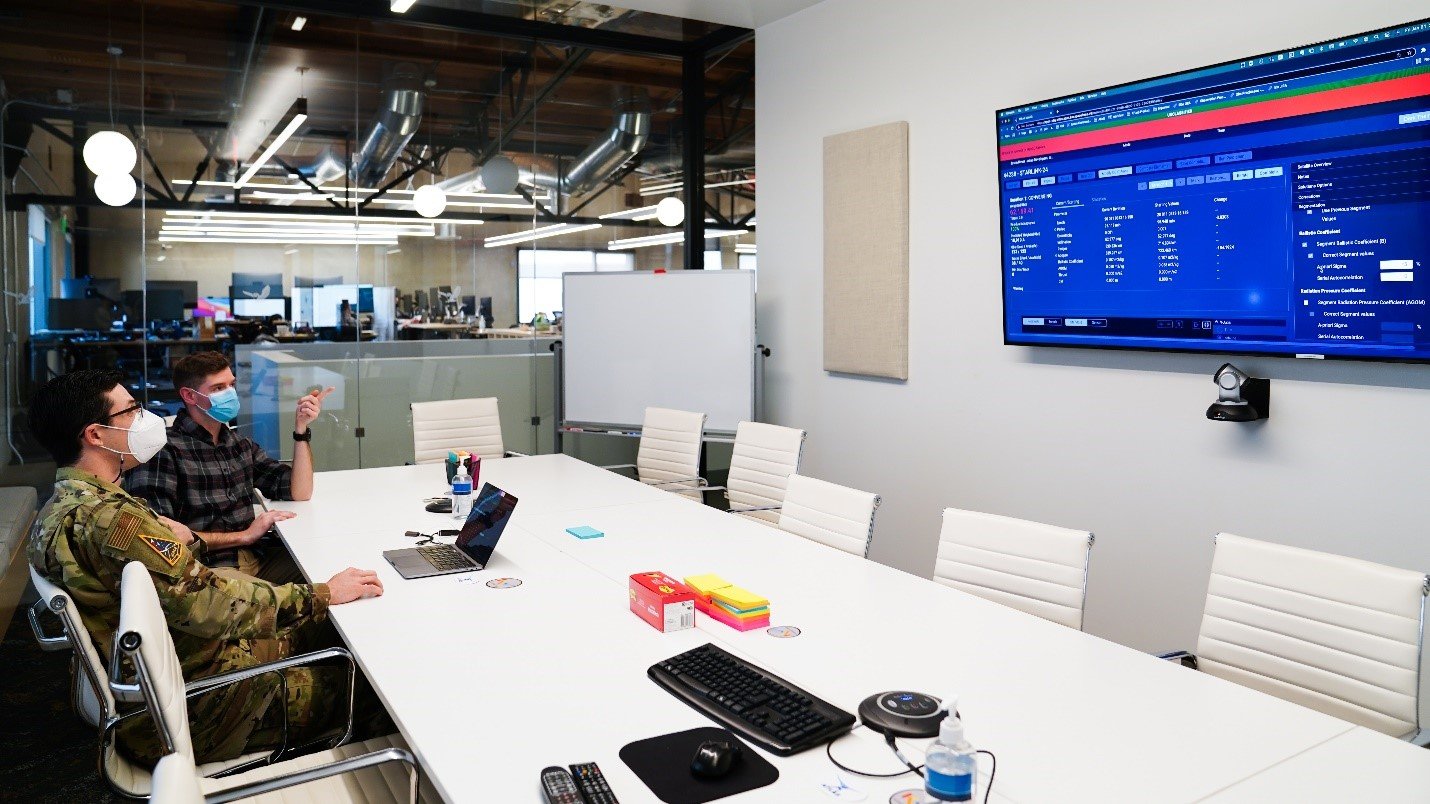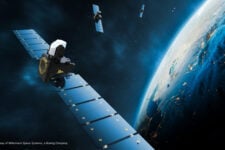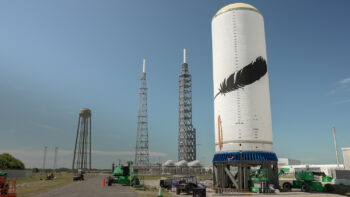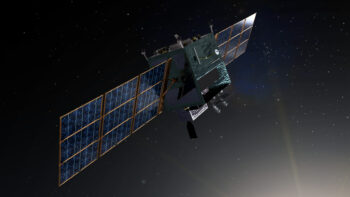
US Space Force 2nd Lt. James Maxwell, right, Kubernetes platform lead, and Capt. Jason Rimer, C2 Space Domain Awareness product lead, (left) both with Space Systems Command’s Space C2, discuss the Advanced Tracking and Launch Analysis System (ATLAS), in El Segundo, Calif., Jan. 21, 2022. (Courtesy photo)
WASHINGTON — One of the two major software development programs that would allow the Space Force to ditch its outdated information technology system for keeping tabs on satellites, spacecraft and dangerous space junk has fallen behind on testing, due to a host of problems that include both technology issues and training gaps, according to the Pentagon’s testing director.
The Space Command and Control (Space C2) program, nicknamed Kobayashi Maru after the Star Trek franchise’s fictional cadet training simulation without a solution, was restructured in fiscal 2022 and since that time has made some progress, finds the 2023 Annual Report of the Director of Operational Test & Evaluation.
The Space C2 program is the latest Defense Department effort — following a decade of work and $1 billion in investment in the infamously flawed Joint Space Operations Center Mission System — to replace the 1980’s-era Space Defense Operations Center (SPADOC) computer system for managing data from the military’s network of radar and telescopes that detect and track objects on orbit to provide space domain awareness (SDA) to operators.
“USSF Guardians will use Space C2 to provide a wide range of space defense, SDA C2, and cross-mission data capabilities to facilitate timely, quality battlespace decisions by DoD and mission partners at multiple classification levels. Those capabilities include infrastructure, data and enterprise services, and mission applications to enable responsive, resilient operational-level command and control capabilities for the National Space Defense Center, the Combined Space Operations Center, 18 SDS [Space Defense Squadron], and other command and control centers,” the report explains.
As one key success, the DOT&E report says that a June 2023 review of the cyber resiliency of one of SC2’s key software systems, Warp Core developed by Palantir Technologies, found it was secure against “nascent-level cyber threat actors,” but the details of that report are contained in a classified annex.
However, DOT&E also found that Space Force developers continued to face problems that are pushing back SPADOC’s replacement yet again.
“[P]roduct development has been slower than anticipated, and the projected date to decommission SPADOC continues to extend further to late FY24, a delay of more than two years from the original timeline,” the report says.
The main difficulty has been with the been with the Advanced Tracking and Launch Analysis System (ATLAS) software, being developed by L3Harris, the DOT&E report explains.
“Operational testing of the Advanced Tracking and Launch Analysis System (ATLAS), Space C2’s primary Space Domain Awareness Command and Control (SDA C2) capability, which had been planned for FY23, was slowed by delayed capability delivery, system stability problems, lack of trained operators, and non-operationally representative test environments.”
NRO should concentrate on bigger, badder ‘tripwire’ ISR birds, new report urges
Meanwhile, the report says, the Space Force should be in charge of pursuing large networks of small satellites under the Space Development Agency’s Proliferated Warfighter Space Architecture (PWSA) — differentiating its “tactical ISR” job from the “strategic” mission of NRO.


























